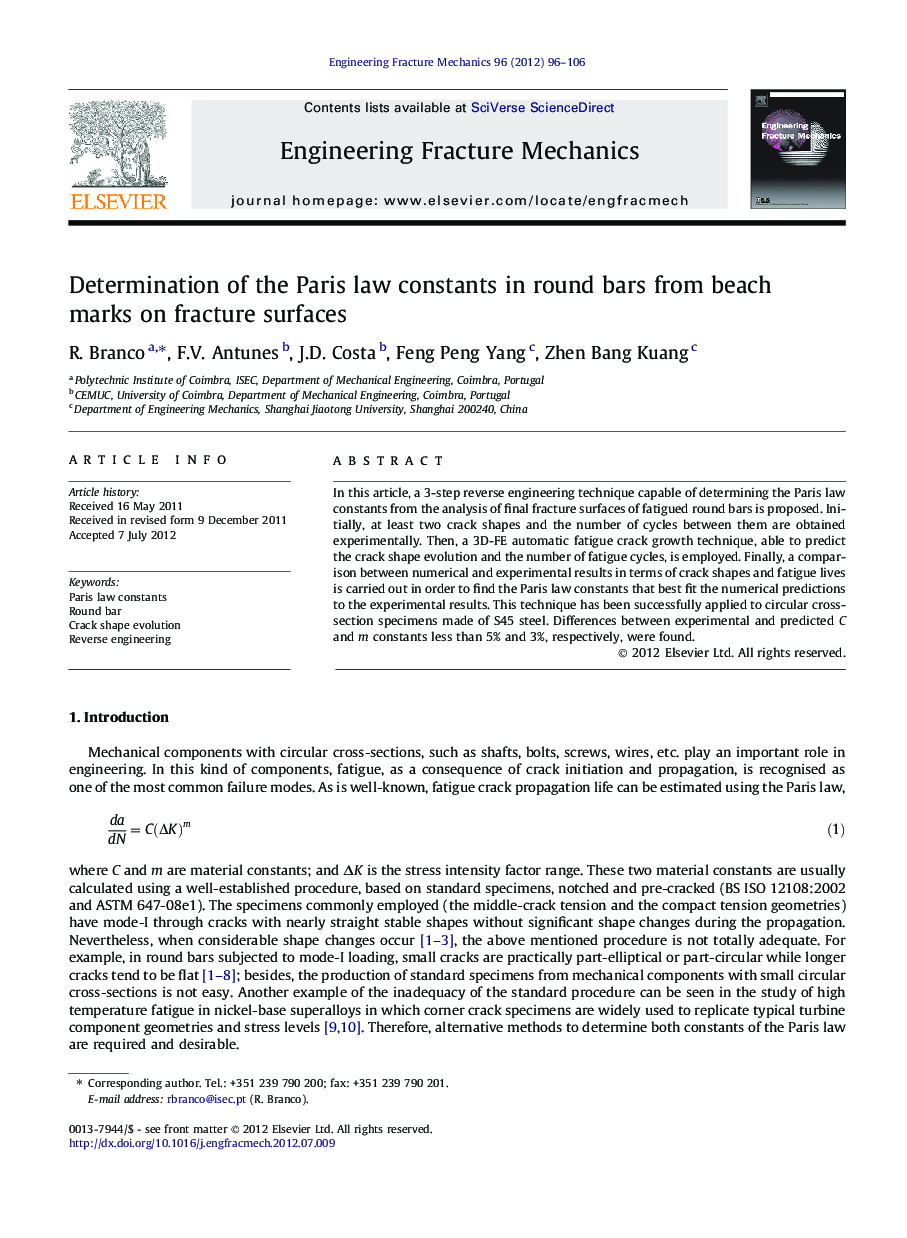| کد مقاله | کد نشریه | سال انتشار | مقاله انگلیسی | نسخه تمام متن |
|---|---|---|---|---|
| 770933 | 1463129 | 2012 | 11 صفحه PDF | دانلود رایگان |

In this article, a 3-step reverse engineering technique capable of determining the Paris law constants from the analysis of final fracture surfaces of fatigued round bars is proposed. Initially, at least two crack shapes and the number of cycles between them are obtained experimentally. Then, a 3D-FE automatic fatigue crack growth technique, able to predict the crack shape evolution and the number of fatigue cycles, is employed. Finally, a comparison between numerical and experimental results in terms of crack shapes and fatigue lives is carried out in order to find the Paris law constants that best fit the numerical predictions to the experimental results. This technique has been successfully applied to circular cross-section specimens made of S45 steel. Differences between experimental and predicted C and m constants less than 5% and 3%, respectively, were found.
► The Paris law constants are determined using a reverse engineering technique.
► Beach marking method is used to evaluate the shape and depth growth of fatigue cracks.
► Numerical simulations of fatigue crack shape for different Paris law constants are performed.
► The constants are found by comparing the numerical predictions with the experimental results.
► The technique is successfully applied to 12 mm-diameter round bars with errors less than 5%.
Journal: Engineering Fracture Mechanics - Volume 96, December 2012, Pages 96–106